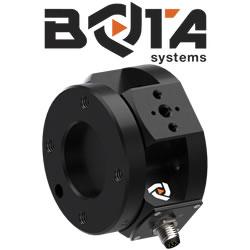Drones and Smart Construction
Sometimes the perfect solution to time-honoured problems is hovering under our very noses. In the case of drones, this philosophy can be entirely literal. UAV technology is on the cutting edge of the consumer market – however, UAVs have greater potential locked within their status as a casual hobby. Commercial drones are growing in popularity, and their scope for allowing us an unbound perspective on the environments we cherish is widely recognised. Their potential as tools of the construction industry is only now coming to light as the full picture of this technologys influence has built up, piece by piece, under the dawn of the robotic age.
Consider how you would plan a proposed development - design schematics, on a micro and macro level, pay off substantially when you are fully confident that every facet of said design is functional, eco-friendly and economically sound. Information leads to viability, as you will know, and UAVs are unmatched in their ability to lend affordable, real-time insight into a construction sites day-to-day existence. Yet before they do so, they can be crucial aids to structural models barely fresh from conception, providing a service to the entire lifespan of an operation that easily outstrips their price tag. Although BIM technology is rapidly changing the face of mapping architectural decisions to their practical contexts, drone flights compliment development models nicely, allowing terrain to be surveyed and analysed before plans are made. Many machines can be programmed to over a dozen flight paths using GPS, selected by operators to maximise their benefit. Data from the flights can then be fed into a BIM system, generating a fluid and practical simulation of the area. Industry leaders in aerial photography are already establishing UAVs as core components of their services, and you cant really blame them. From stitching together 3-D models using camera footage, to aiding the volumetric analysis of a site, UAVs are a smart choice for pre-development assessment.
However, its important to note that each stage of development reaps rewards from drone technology. Once the data of an area is stored and applied to construction blueprints, UAVs can be used in a variety of other ways. Some pragmatic developers are currently testing their suitability for obtaining information on hard-to-reach or very large objects - examples can include inspecting the underside of bridges (notoriously hard to accomplish correctly), and counting stripes of paint on a newly paved road. Since UAVs are relatively cheap and easy to use, these tasks are saved from expensive and laborious solutions. Alongside the panoramic surveillance associated with large construction site, an intimate viewpoint can emerge of a site of any size, connecting developers to every corner of their project, giving visual updates as often as youd like. The freedom and immediate communication inherent in UAVs lets project managers assess the smallest or grandest component of a structure without risking the health and safety of their workforce. Clients can also be satisfied in seeing the progress of a site before, during and after its construction, in a medium thats visually dazzling. And when everythings done, what better way to show off your work than a vibrant cornucopia of aerial photography?
Drones are also continuing to become more agile, dependable, and reactive to their surroundings. Intriguingly, roboticists in 2011 tried to prove drones can stack blocks of light material in an ordered pattern, as a kind of trial run for the technologys increasing intelligence. The experiments, built on coding mathematical algorithms into the drones, were successful. Raffaelo DAndreas mesmerising TED talk two years later on the strides taken within UAV research demonstrated that drones can launch rubber balls, with a net, back to the user, gracefully and precisely. The programming for such behaviour depends on UAVs responding to the space around them, figuring out their balance, their relationship to other objects. Whether this means construction sites of tomorrow will see drones carrying out tasks whilst flitting through scores of human beings is difficult to say - you certainly wouldnt want to push away those copter blades with an idle hand. In fact, much of the chance for UAVs to actively assist in physical tasks will depend on their increasing weight capabilities, determined by its blade count. Charities already use drones to deposit food and aid packages in treacherous locations; it isnt a stretch to suggest the plastic used in the 2011 experiment may one day be replaced by steel and cinderblocks, although drone A.I. will have to undergo intense safety tests to make that happen.
Now that UAVs are proven assets in the construction field, it may be time for the industry to have more direct contact with UAV manufacturers, if only to see what further innovation is to come. The measure of what will change, and what can already be learned, lies in sustainable development looking for the tools that arent getting much attention, even as that tool begs to be realised. Those looking to capitalise on drone tech in sustainable development will do well to attend the second annual SkyTech conference, taking place in Londons Business Design Centre on the 27th and 28th January 2016. The two-day event will crystallise drone interest in the here and now, bringing together manufacturers, software engineers, academics and anyone under the UAV sun. After doubling in size from its first incarnation, SkyTech is not to be missed. If you have a calendar, mark it immediately.
Featured Product

